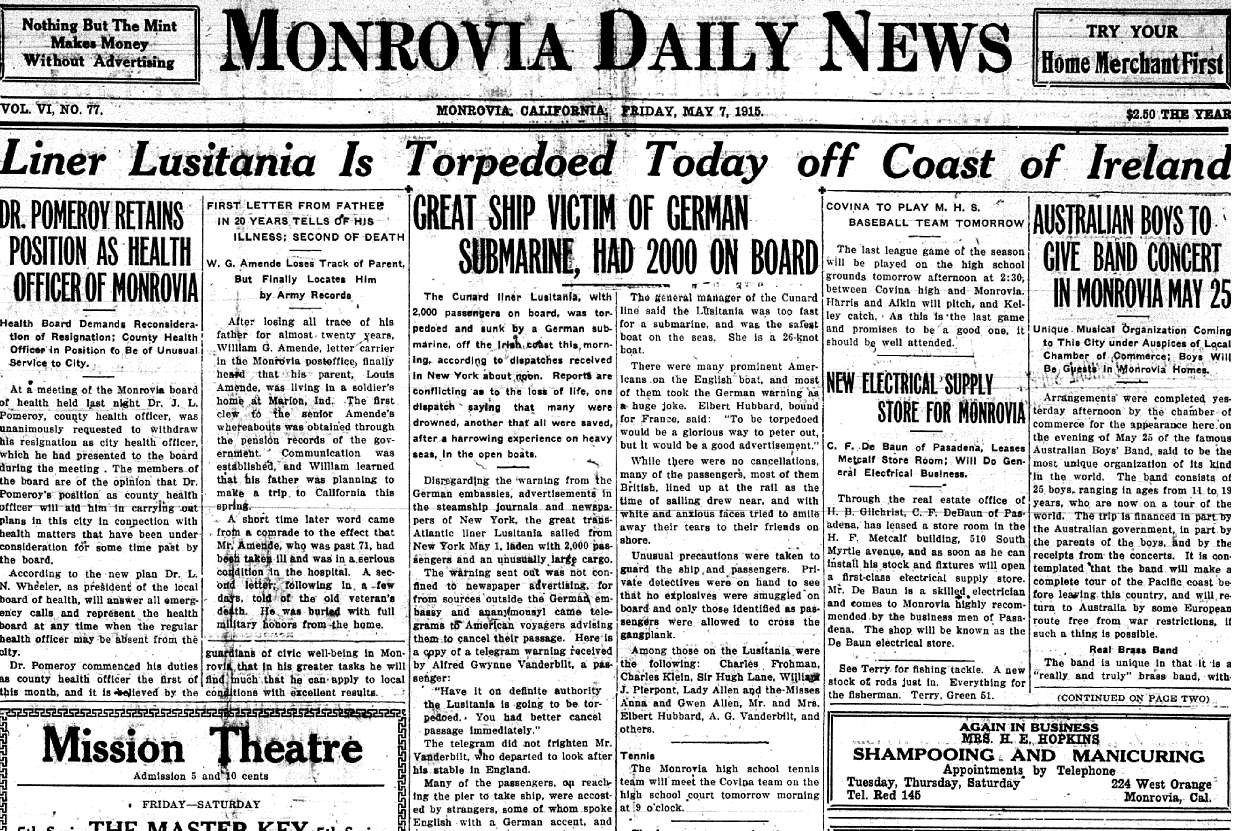Discovering the Lusitania in Monrovia
October 5th, 2012 at 10:43 pm (History)
How must it have felt to open up your newspaper and find this headline:
That’s just what must have happened on Friday, May 7, 1915. I came across this newspaper today while working my way through old newspapers on microfilm at the library. This article has more the feel of rumor than news; the sinking had probably happened only hours before they went to print, and as they note, casualty reports are conflicting, “one dispatch saying that many were drowned, another that all were saved.” In reality, 1,198 of the almost 1,959 people onboard were lost.
It is one thing to read about historical events and analyze them though the misty depths of decades (or even a near-century). Lusitania’s demise, which counted 123 Americans amongst its dead, was a pivotal event that helped drag the U.S. into World War I. But it is strange how much more present, and visceral, the event seems in this snapshot, the then-dim understanding frozen in time.
I hadn’t realized that there were several warnings issued before the Lusitania’s departure, via telegrams to individuals and advertisements to the public in New York newspapers. 1,265 passengers disregarded or were ignorant of these warnings. The ship took “precautions,” but they did not avail against the German U-boat that dealt the fatal blow.
 Also, this ship was freakin’ ginormous, and could almost be forgiven for feeling rather invulnerable given its superior speed (25 knots), despite the Titanic’s demise three years earlier.
Also, this ship was freakin’ ginormous, and could almost be forgiven for feeling rather invulnerable given its superior speed (25 knots), despite the Titanic’s demise three years earlier.
Adding to the sense of surreal historical creepiness, the Monrovia Daily News article is immediately followed by this notice: “Tennis: The Monrovia high school tennis team will meet the covina team on the high school court tomorrow morning at 9 o’clock.” Other neighboring headlines are similarly mundane and local. Despite the event’s top billing on page one, I wonder how long it took for its significance to sink in. As I work my way through later papers in May 1915, I may find out.
